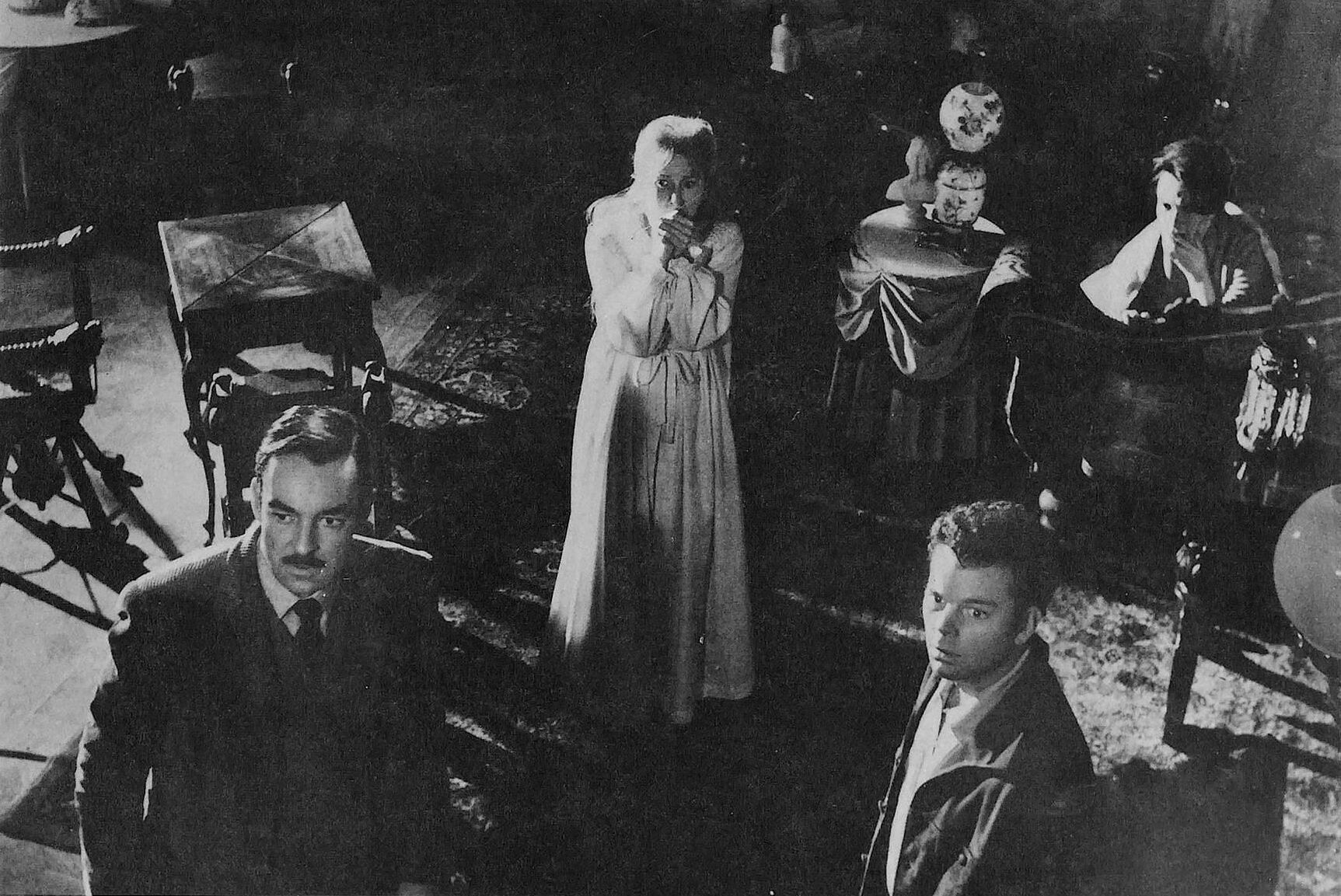
The 10 Best Horror Novels of All Time
Okay, we could have populated this list with 3 or 4 Stephen King’s novels but he’s not getting away with that. He’s only allowed one on the list and you may not agree with our other choice but then maybe you should get a life.
Frankenstein by Mary Shelley (1818)
Short story: Mad Scientist Victor Frankenstein creates a human being in his laboratory with disastrous consequences.
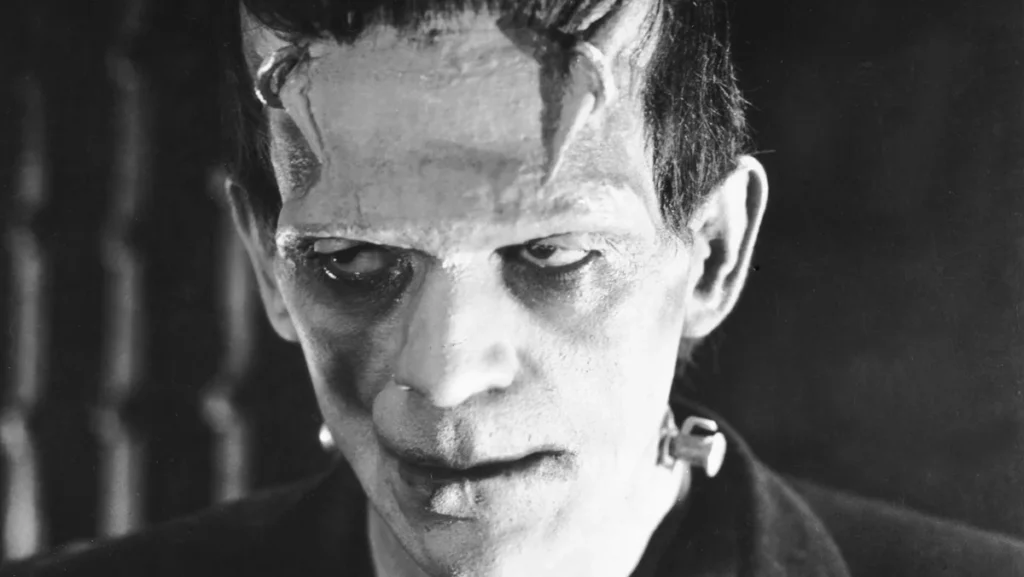
Mary Shelley’s “Frankenstein” was first published in 1818. It tells the story of Victor Frankenstein, a young scientist who creates a monster from dead body parts and brings it to life through a scientific experiment. The monster, seeking revenge against its creator, haunts Victor throughout the novel, leading to tragic consequences for both.
Shelley began writing “Frankenstein” when she was just 18 years old during a summer trip to Switzerland with her lover, Percy Bysshe Shelley, and friends Lord Byron and John Polidori. The group had a competition to see who could write the best horror story, and Shelley’s story ultimately became the classic novel we all know today. The story itself was heavily influenced by the political and scientific ideas of the time, particularly the debates surrounding the use of technology.
Shelley’s life and relationships also played a role in the novel’s creation. She was the daughter of feminist Mary Wollstonecraft and political philosopher William Godwin. Her mother died just days after her birth. Shelley’s later relationship with Percy was tumultuous, they eloped when she was just 16 when he was already married. They faced financial difficulties the loss of three of their children. The novel is seen by some as a reflection of Shelley’s own struggles and anxieties, particularly regarding motherhood and the role of women in society.
Since its publication, “Frankenstein” has had a significant impact on modern horror. The novel’s themes of science and technology gone wrong, and the consequences of playing God, continue to resonate with readers today. The story of the monster and its quest for acceptance and love has also been a source of inspiration for numerous horror movies, TV shows, and books.
Dracula by Bram Stoker (1897)
Short story: Transylvanian vampire moves to England to spread the undead curse.
The enduring appeal of the Dracula myth has spawned countless copycats and hundreds of films but nothing comes close to the true king of the undead.
Bram Stoker was an Irish author, best known for his novel “Dracula,” which is considered one of the most famous horror novels of all time. Stoker was born on November 8, 1847, in Clontarf, Dublin, Ireland. He was the third of seven children in his family, and from a young age, he showed an interest in literature and storytelling.
Stoker’s early education was primarily focused on mathematics and science, but he also developed a passion for literature and the theatre. He attended Trinity College in Dublin, where he studied mathematics and graduated with honours. After college, Stoker worked as a civil servant in Dublin before moving to London in 1878.
In London, he became a theatre critic and was personal assistant to the famous actor Henry Irving. He also began writing fiction, and in 1887, he published his first novel, The Snake’s Pass. A thriller set in Ireland, it was not a commercial success, but it did establish Stoker as a writer.
It was during this time that Stoker began to write Dracula, which he would eventually publish in 1897. The novel tells the story of Count Dracula, a vampire who moves from Transylvania to England. The novel is composed of journal entries, letters, and newspaper articles, and it explores themes of sexuality, power, and the unknown. It was not an immediate success, but over time it has become one of the most famous and enduring horror novels of all time.
Stoker wrote a number of other novels and short stories, many of which dealt with supernatural and horror themes, but none of them reached the same level of popularity as Dracula. He died on April 20, 1912, in London, England from pneumonia.
I am Legend by Richard Matheson (1954)
Short story: Last man seemingly alive after a plague has to try and survive in a city of the undead.
“I Am Legend” is a 1954 horror and science fiction novel by Richard Matheson. It tells the story of Robert Neville, the last surviving human in a world overrun by vampires. Neville spends his days scavenging for supplies and fortifying his home against vampire attacks that come every night. He also spends his time researching the virus that caused the vampire outbreak and searching for a cure. As he becomes more isolated, Neville’s mental state begins to deteriorate, and he questions his own sanity.
The novel explores themes of isolation, the nature of humanity, and the consequences of science and technology gone wrong. It has been highly influential in the horror and science fiction genres, and has been adapted into several films, including “The Last Man on Earth” (1964), “The Omega Man” (1971), and “I Am Legend” (2007).
Richard Matheson was an American author and screenwriter born in New Jersey in 1926. He began publishing science fiction and horror stories in the 1950s, and quickly gained a reputation as a master of the genre.
Matheson’s writing often dealt with the supernatural and the psychological effects of extraordinary events on ordinary people. He wrote many novels, short stories, and screenplays throughout his career, including several episodes of The Twilight Zone. Matheson passed away in 2013.
Psycho by Robert Bloch (1959)

Short story: The quintessential serial killer story about a motel owner who is possessed by the spirit of his own mother.
“Psycho” is a 1959 novel by Robert Bloch, which tells the story of Norman Bates, the proprietor of the Bates Motel. The novel begins with a young woman named Mary Crane stealing money from her employer, and going on the run. She ends up at the Bates Motel, where she meets the seemingly friendly Norman Bates. However, as the story unfolds, it is revealed that Norman has a dark secret: he is controlled by the ghost of his deceased mother, and has a penchant for murder. The novel explores themes of mental illness, guilt, and the corrupting nature of power.
The novel was adapted into a film directed by Alfred Hitchcock in 1960, which is considered a classic of the horror genre. The film has become famous for its iconic shower scene, and for its portrayal of the disturbed mind of Norman Bates. It also was a huge success in box office and the way it was filmed, edited and marketed was groundbreaking for the time.
Robert Bloch was an American fiction writer and scriptwriter, born in Chicago in 1917. He began writing at a young age and published his first story in Weird Tales magazine at the age of 19. Bloch went on to write over 200 short stories, novels, and screenplays throughout his career. His work often dealt with the supernatural and the psychological effects of extraordinary events on ordinary people. Bloch passed away in 1994.
The Haunting of Hill House by Shirley Jackson
Short story: A group of scientists and mediums come together to unravel the truth about Hill House.
“The Haunting of Hill House” was first published in 1959. The novel tells the story of four main characters: Eleanor Vance, a shy and isolated woman who is invited to Hill House, a mysterious mansion with a dark past, along with Dr. John Montague, an investigator of the supernatural, and two other participants, Theodora and Luke.
Eleanor quickly becomes fixated on the house and begins to experience strange and terrifying occurrences. As the story unfolds, it becomes clear that the house is haunted, and that Eleanor is becoming increasingly unstable. The novel explores themes of mental illness, the supernatural, and the corrupting nature of power.
Shirley Jackson was an American author, born in San Francisco in 1916. She began writing at a young age and published her first story in The New Yorker magazine at the age of 23. Jackson went on to write several novels and numerous short stories throughout her career. Her writing often dealt with the supernatural and its psychological effects on ordinary people. She passed away in 1965.
“The Haunting of Hill House” is considered a classic of the supernatural genre, and its impact cannot be overstated. The novel has been cited as an inspiration for countless works, and it continues to be widely read and studied today. One of the reasons why the book is ground-breaking is its exploration of mental illness and the supernatural. The novel’s portrayal of Eleanor’s descent into madness is masterful and it has been widely praised for its ability to create a sense of unease and tension throughout the story.
The novel’s exploration of the corrupting nature of power is also noteworthy. Hill House is a powerful symbol of this and it is a reminder of the dangers of becoming too fixated on something.
The Exorcist by William Peter Blatty (1971)
Short story: Two priests try to exorcise a demon possessing a young girl.
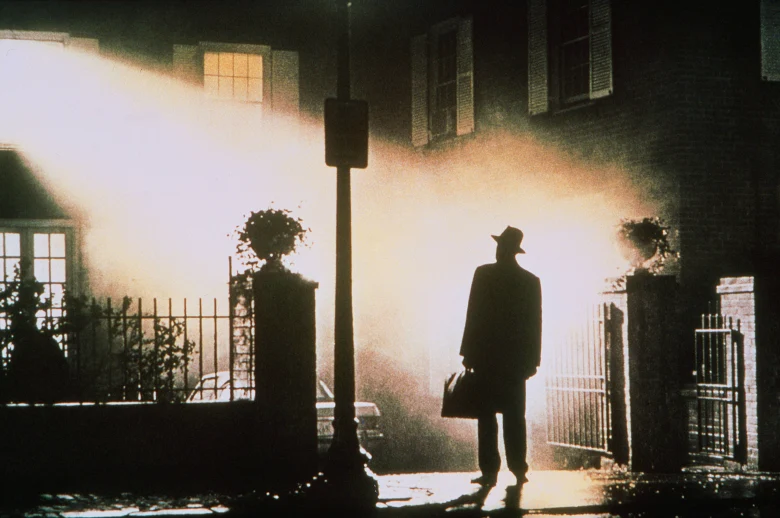
“The Exorcist” is a novel by William Peter Blatty, first published in 1971. It tells the story of Regan MacNeil, a twelve-year-old girl who begins to exhibit strange and terrifying behaviour. Her mother, Chris MacNeil, a famous film actress, turns to science and medicine to try and understand what is happening to her daughter, but to no avail.
Desperate, Chris eventually turns to two Catholic priests, Father Damien Karras and Father Lankester Merrin, for help who prepare to carry out an exorcism.
The novel explores themes of faith, evil, and the power of the supernatural. It was a best-seller and the film won a Golden Globe and an Academy Award for the 1973 film directed by William Friedkin. The film was a critical and commercial success, and it is widely considered one of the greatest horror films of all time, winning an Academy Award for Best Adapted Screenplay for Blatty. However, the film’s graphic violence and disturbing imagery caused controversy and it was banned in several countries.
William Peter Blatty was an American novelist, screenwriter, and filmmaker. He was born in 1928 in New York City and was raised in a Catholic family. He served in the United States Air Force and later studied at Georgetown University, where he graduated with a degree in English. Blatty began his career as a comedy writer and eventually transitioned to writing novels and screenplays. He passed away in 2017.
The Exorcist has had a significant impact on the horror genre. Its portrayal of a demonic possession and the exorcism to expel the demon has been widely imitated and adapted in films and books. The novel and film also dealt with themes of faith and evil in a way that was considered taboo at the time. The graphic violence and disturbing imagery also helped to pave the way for the more explicit horror films and novels that followed in its wake.
Ghost Story by Peter Straub (1979)
Short story: Four terror-stricken men face the ghost of their sinful past.
Ghost Story turned Peter Straub into an international best seller at the time. The book follows a group of four aging friends living in the small town of Milburn, New York, who are haunted by the ghost of a fifth member of their group, who died under mysterious circumstances. The novel explores themes of guilt, memory, and the consequences of past actions.
The novel begins with the death of a young woman, who is found drowned in a lake near the town. The four friends, known as the Chowder Society, are deeply affected by her death and begin to experience strange occurrences and visions of the ghost of their deceased friend, who they begin to suspect may be responsible for the young woman’s death. As the friends investigate the ghost’s past, they begin to uncover secrets and lies that have been kept hidden for decades.
Peter Straub is a bestselling American author of horror and suspense novels. He began his writing career in the 1970s and quickly gained critical acclaim for his work, which often explores the darker aspects of human nature. His other notable novels include “Koko”, “The Talisman” and “Black House”.
In 1981, a film adaptation of “Ghost Story” was released, directed by John Irvin and starring Fred Astaire, Melvyn Douglas, Douglas Fairbanks Jr., and John Houseman. The film received mixed reviews and was not a commercial success. However, it has since gained a cult following and is considered a classic in the horror genre.
It by Stephen King (1986)
Short story: A group of friends confront the shapeshifting monster Pennywise the clown.

To be honest, we could have put at least a couple more Stephen King novels on this list, so lauded is he as the alpha male of all things gruesome and supernatural. IT is a long book that flits back between past and present before it reaches its final conflict as our heroes combat Pennywise in the Derry sewer system. There has been one TV and one film version of the book to date.
The story follows childhood friends who battle Pennywise the clown and succeed in beating him only to have to come back as adults and face their fears again. At just over a thousand pages long, It is often seen as King’s opus not withstanding he’s written hundreds of stories 65 novels.
King is still churning them out, of course and another classic may well be just around the corner. The Stand, Salem’s Lot, and The Shining (not to mention Misery) run the substantial IT a close second and everyone, of course, has their favourite.
Carrion Comfort by Dan Simmons (1988)
Short story: One man tries to prove that a secret society of powerful beings is behind the world’s most horrific catastrophes.
Dan Simmons can often go under the radar when it comes to his horror novels. Carrion Comfort was published in the late 80s and has a solid cult following. It’s a story that is told on an epic scale that stretches from the concentration camps of the Second World War to a modern New York suburb where the protagonist Saul finally does battle with the evil he has been trying to unveil for so long.
Simmons has a liking for historical stories and some of his later works, The Terror and Abominable to name just two, fuse real life events with superstition and mystical happenings. Carrion Comfort, according to Stephen King, is in the top three best horror novels ever written so it is well worth seeking out.
Let the Right One In by John Ajvide Lindqvist (2004)
Short story: Isolated and lonely boy makes friends with a young vampire girl.
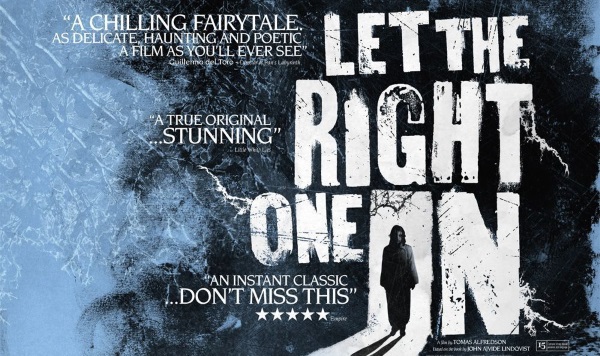
While the vampire legacy was fast getting pushed into a wave of leather or latex clad fanged heroes, in the early 2000s, Swedish writer Lindqvist came out with the delightfully claustrophobic Let the Right One In. Based in a small isolated town, the story centres on a 12 year old boy who builds a friendship with a vampire girl who is living nearby.
Oskar is lonely and bullied and Eli helps him to combat his tormentors. As they become closer, we learn that Eli is actually a boy who was castrated before he was turned as a vampire. Eventually Oskar comes to serve Eli and they head together to the nearby city.
So there’s our top ten best horror novels. Which of yours are not on the list? Let us know in the comments section below.
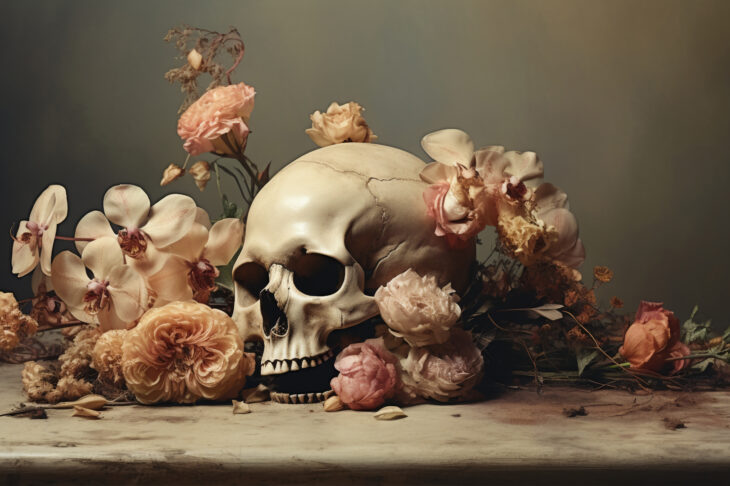

One thought on “The 10 Best Horror Novels of All Time”